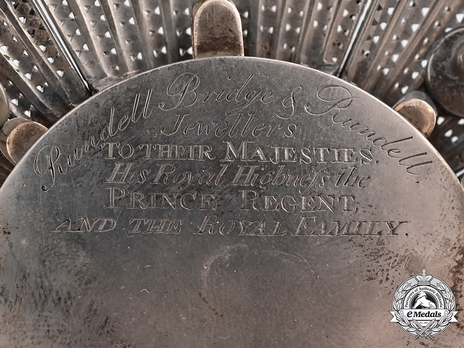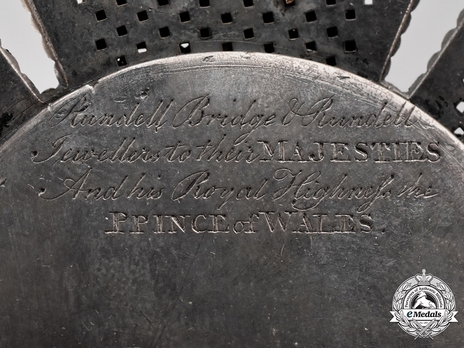Rundell, Bridge & Co.
LAST UPDATED:


Attributes
History
Rundell, Bridge & Co. was founded in 1787 in London, England originally under the name Rundell & Bridge. It was founded by Philip Rundel and John Bridge. Philip Rundell apprenticed under a silver and goldsmith by the name of Mr. Rogers in Norton in 1746. During his apprenticeship he met John Bridge. Rundell left his position with Mr. Rogers and went to work for Mr. Alderman Pickett at 32 Ludgate Hill in London. Rundell partnered with Mr. Pickett in 1769, which formed the partnership of Pickett and Rundell. When Pickett died in 1786, Rundell bought out the business from Pickett’s daughter. Coincidentally, John Bridge had also been employed by Pickett for years before his death. It was a year later that the two men would form Rundell & Bridge.
In 1797, Rundell & Bridge received the royal warrant and for the next five years they proved themselves as silver and goldsmiths and jewelry makers, outperforming their competition - Philip Gilbert. Their performances won them the favour of King George IV. In 1804, Edmund Walter Rundell, Phlip’s nephew, joined the firm as a partner and the name changed to Rundell, Bridge & Rundell. That same year, John Bridge’s nephew, John Gawler Bridge, joined the company. The firm employed some well-known British designers and artists, such as John Flaxman, Thomas Stothard, Benjamin Smith, Digby Scott, and Paul Storr. The company designed and produced the DIamond Diadem in 1820 for King George IV’s coronation in 1821. It is one of the most famous pieces of jewellery created for Britain’s royal family. Philip Rundell retired in 1823 and died in 1827. It was at this point that the good fortune the company had once possessed began to slip. In 1834, John Bridge died and a new partnership was formed with John Gawler Bridge, Thomas Bigge, John Bridge’s nephews and Bigge’s son. The firm name changed in response to the newfound partnership to Rundell, Bridge & Co. Bridge’s nephew lost a significant amount of Royal patronage to Garrard’s. The Duke of York died in 1827 and King George IV in 1830, which further pushed business downwards. Rundell, Bridge & Co.’s assets were sold at Christie’s in 1842. The company closed its doors in 1843 and the partnership dissolved in 1845.
Rundell, Bridge & Co. produced the Order of the Garter, Order of the Bath, Order of St. Patrick, Order of St. Michael and St. George, the Royal Guelphic Order, Army Gold Crosses and Medals and Seringapatam Medals.

This Maker has no versions yet.
This maker currently has no products.


Scroll Top